It’s with some sadness, that earlier this week, I wished a fond farewell to the biggest blog I ever created, Master Zend Framework. Given that, it only feels right — and responsible — to talk about what motivated the decision to close the blog, and what the future holds for the blog’s content.
Several years ago, while I was working in London, I started blogging, likely for no other reason than I’d seen others do it, and felt inspired to blog as well.
Despite that initial enthusiasm, and doing well in grade 11 English, I had no idea about how to blog, what to blog about, or why I was really blogging, other than just to share what I was learning “with the world”.
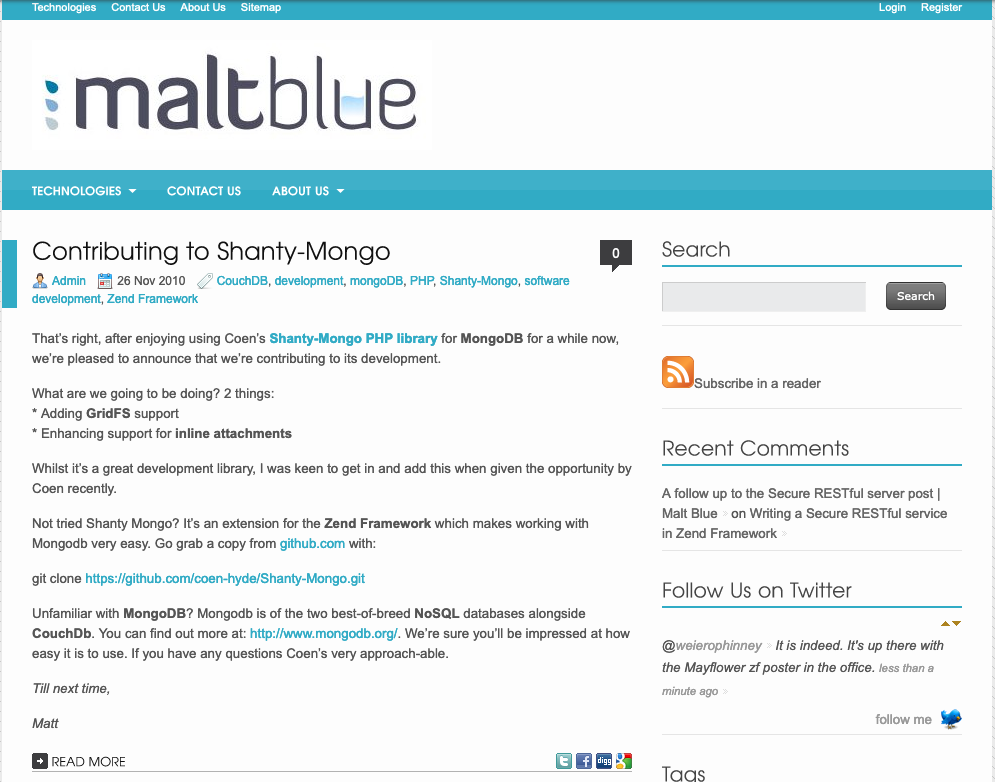
The blog was originally called maltblue.com.
If you use the Way Back Machine to look at it, you’ll see that it was a mishmash of all manner of tech and software development-related articles.
There was no rhyme, no reason, and definitely no cohesion to what I wrote about, other than I felt inspired to write about the particular topic at the time.
It was this so much so, that a friend said to me, gently:
I’m looking at your site and have no clear idea of what it’s about, nor of what it wants to be.
Truer words were never spoken!
Gladly, however, over the course of several months, as I continued to write and grow as a blogger, I started to centralise around one central theme: Zend Framework.
This was the (PHP) framework that I was using the most on a regular basis, the one that I felt held the most promise, and the one I wanted to continue using.
Zend, the company, never really supported anyone in the community who blogged about the framework.
However, I enjoyed the framework enough and the people who I had been getting to know in the community, that a lack of support from them didn’t matter.
And Then Malt Blue Became Master Zend Framework
Actually, I felt so committed to Zend Framework and enjoyed my friends’ company so much, that I decided to rebrand my blog as Master Zend Framework - and completely dedicated it to that topic.
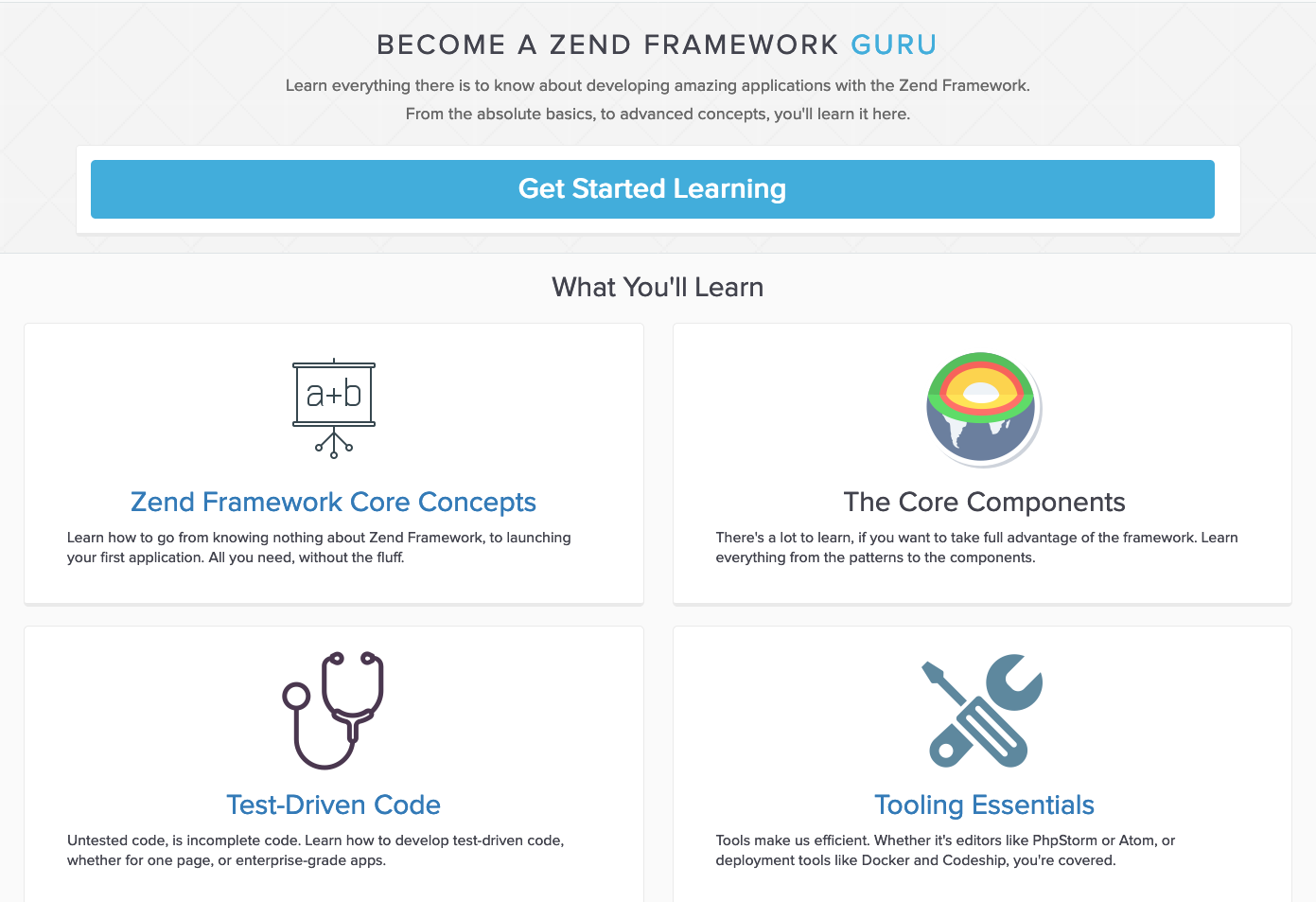
Given this clarity of focus, I invested quite a number of pounds (£££’s) and rebranded it as well.
It had a new home at masterzendframework.com.
The new approach went well for quite some years.
Actually, it helped me in immeasurable ways, chiefly:
- It helped me obtain several software development contracts
- It gave me my start talking at PHP-based conferences, such as ZendCon and PHP World; and
- It helped get me a bit of name recognition for permanent roles that I applied for, making them easier to successfully apply for.
This continued to be the case for some months to years, however, again, as these things invariably go, my interest in the framework waned as other interests rose to take its place.
Want to Learn More About Mezzio?
Mezzio Essentials teaches you the fundamentals of PHP's Mezzio framework. It's a practical, hands-on approach, which shows you just enough of about the underlying
principles and concepts before stepping you through the process of creating an application.
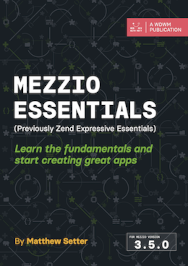
But the Passion Didn’t Last Forever
Little by little, along with getting married and having children, the time that I felt I could devote to the site all but dried up.
It became ever harder to find or make the time, and I was working ever less with the framework as well.
Given that, I didn’t feel that I could talk sufficiently authoritatively about the framework anymore.
Despite this, I couldn’t bring myself to shutter the site.
I’d invested way too much time and money in it, and it was the continuation of my first blog.
The emotional connection was far too strong.
With some enthusiasm, I tried to rekindle the fire of passion on several occasions.
But despite how hard I tried, the passion would never last long.
Of all the thoughts swirling through my head, I felt that I had to focus on my business and its website, the one which you’re reading now, and that I didn’t have the time to devote to two sites; not fully.
But Something’s Changed, Recently
But recently, something — in earnest this time — began to change within me.
I’d stumbled upon a happy medium!
What if, instead of trying to maintain two sites, I merged the content from Master Zend Framework in to my business site?
That way, as part of my regular blogging activities, I could:
- Update old content
- Prune old articles when they’d exceeded their natural lifetime; and
- Continue blogging about Laminas and Mezzio (the latest incarnations of Zend Framework and Zend Expressive) as and when it most makes sense?
Sounds logical, right?
It sure did to me.
To further validate this proposition, I’ve recently been accepted as a member of the Laminas Technical Steering Committee.
This role, increasingly, sees me devoting time to help out with guiding the project, as well as being directly involved in maintaining some of the code within the project.
Based on this, I’m using some aspect of the framework on a regular basis, and can, progressively, begin to speak authoritatively about it again.
Because of this commitment, I know that I won’t be walking away from the framework any time soon.
I pondered this change some more, and the more I did, the more it made sense.
So, earlier in the week, I copied over all of the content from Master Zend Framework to this site, and put a plan in place to help me update said content.
After that, I updated the site’s virtual host configuration to perform a 301 redirect any request to the equivalent page on this blog.
That way, any requests for the old content will be redirected to this site, and, with time, Google’s search index will change to show this site, and not the old one.
There’s a LOT of Work to Do!
I imported well over a 100 articles!
So, it’s going to take quite some time to go through them all, updating, pruning, and creating newer content to reflect recent changes, and looking for bugs, broken links, and other issues.
I also have to add a note to the start of each migrated article, so that, should anyone still see Master Zend Framework in the Google search results, they won’t be left wondering why they’ve ended up on another domain after clicking on one of the links to the articles.
However, even though it was hard to go through with the migration and site deprecation, the more time goes by, the more I know it’s the right decision.
Closing the Door and Turning Off the Lights
So, Master Zend Framework, after much thought and discussion, is closed for good.
Despite how hard it was to do that, I’m excited that the content lives on, and will progressively be improved.
While the original home is no more, the spirit and content live on.
If you read even one article on the site, bought the Zend Expressive book, or took one of my Pluralsight courses, thank you!
Without you, I couldn’t have kept the site going for as long as it did, and it was for you that I was writing the articles and creating the books and courses for.
I hope that, even if in some small way, I was able to help you use the framework and its various libraries and components better, so that you could create better applications with less effort.
I hope that you’ll continue to enjoy the content here on this site, and that you’ll get a lot out of the content that is yet to come.
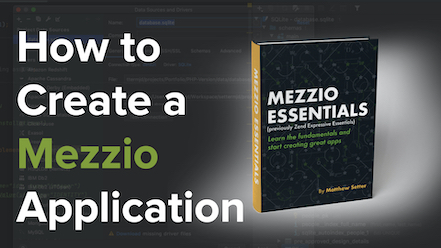
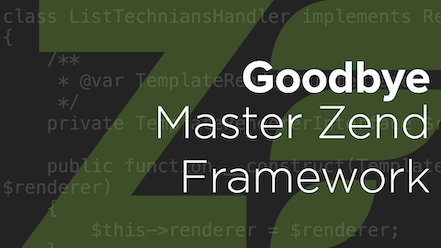



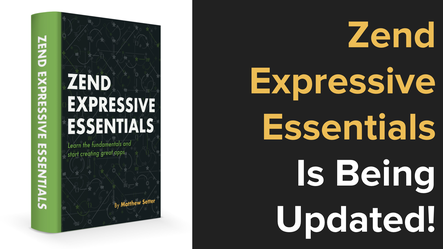

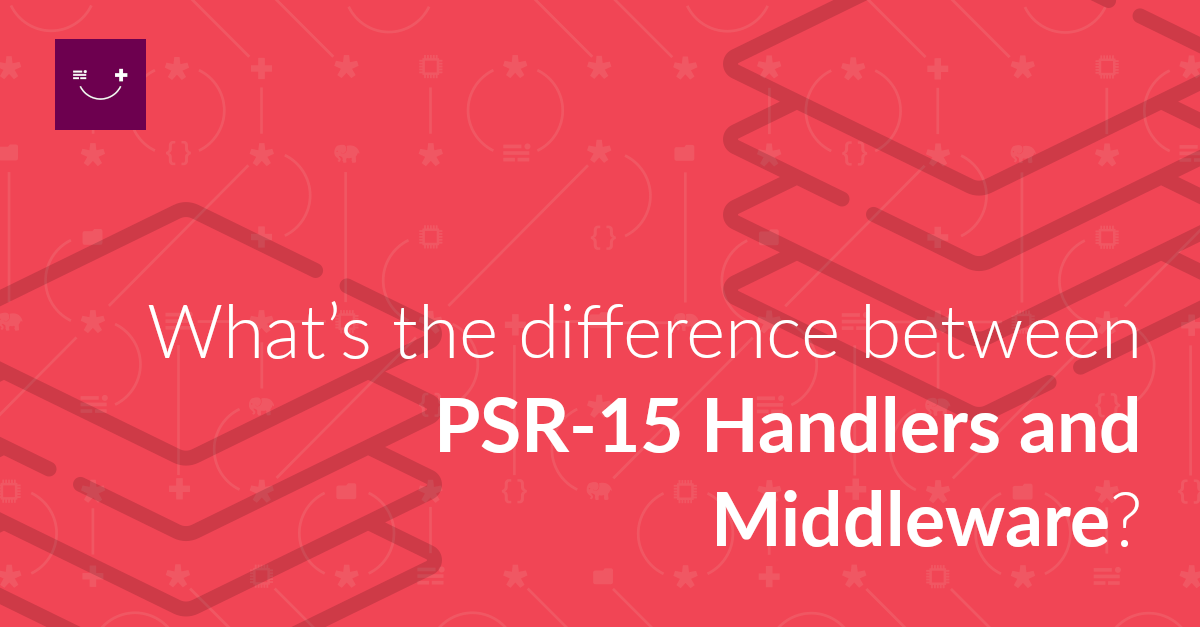
Join the discussion
comments powered by Disqus